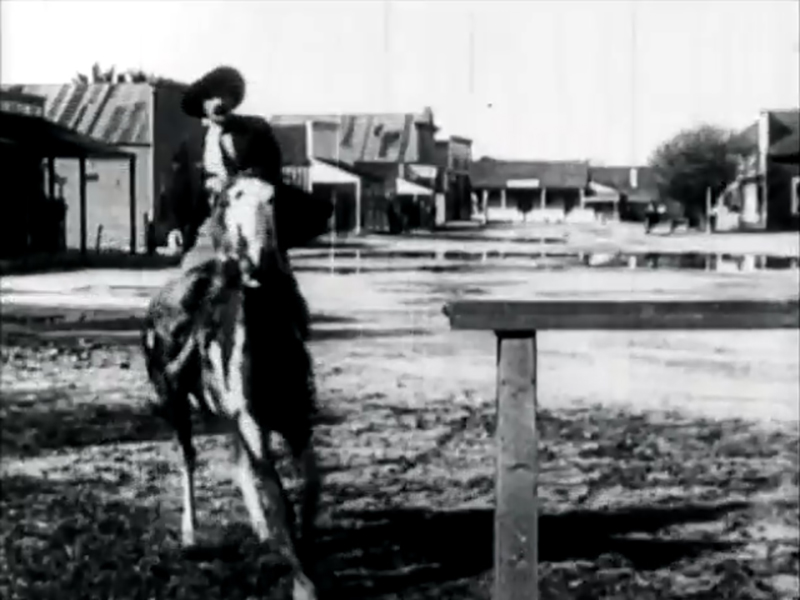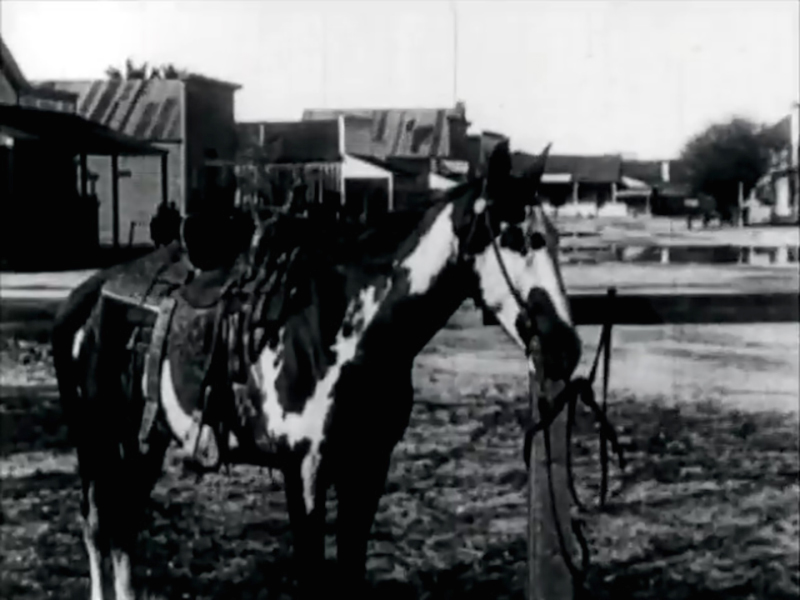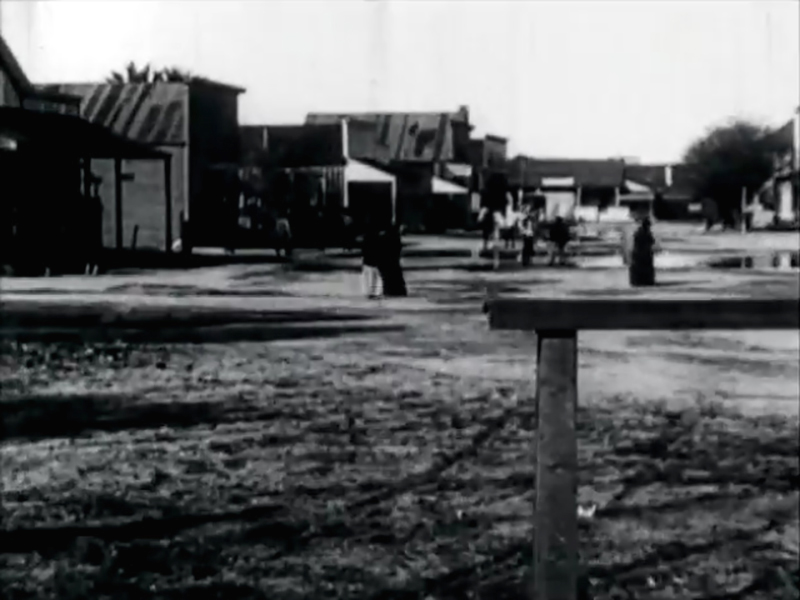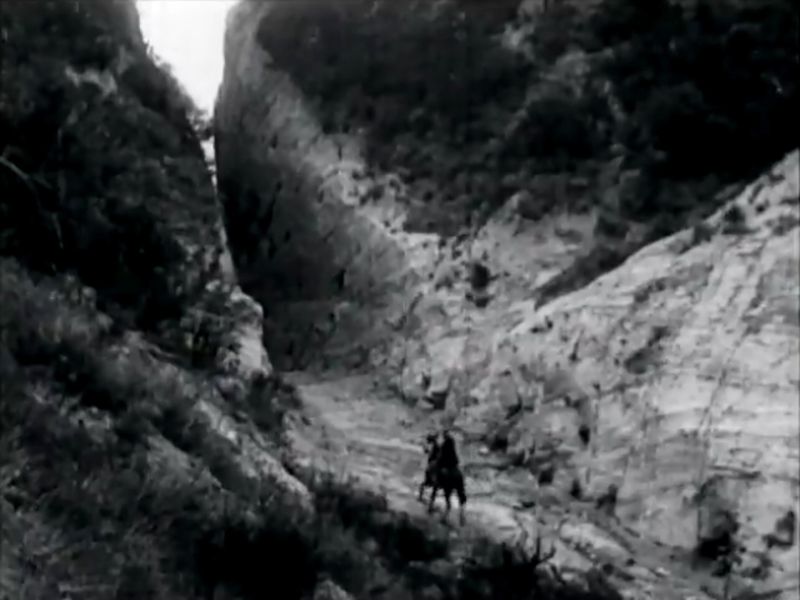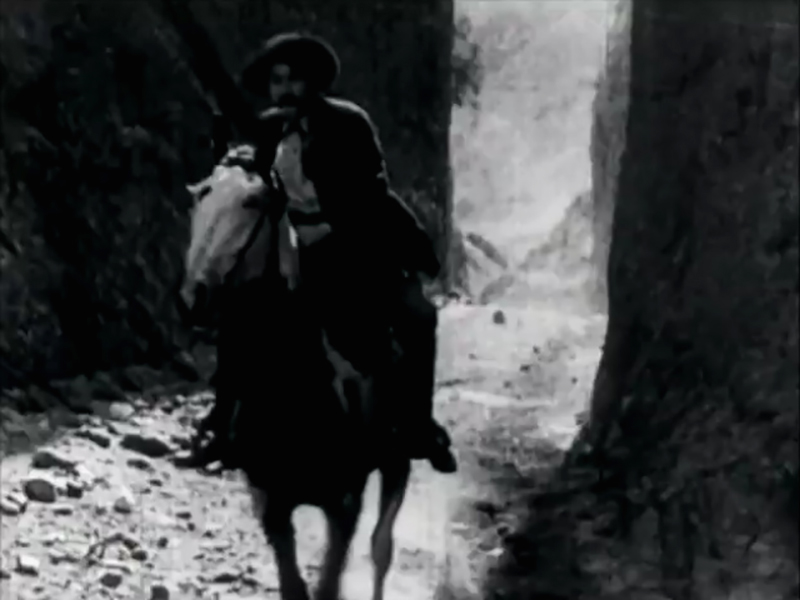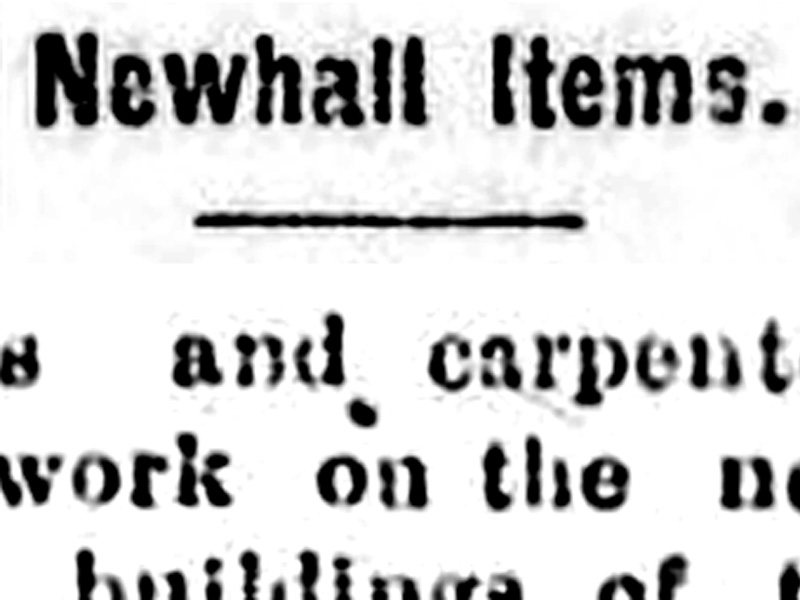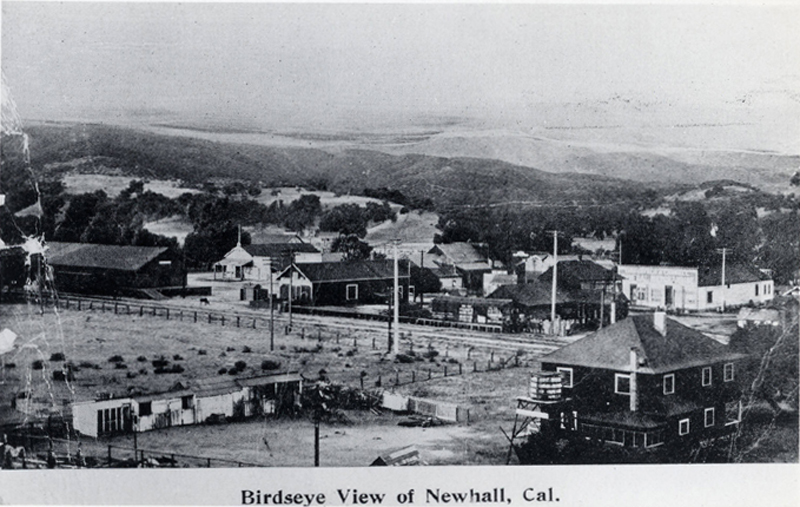|
|

|
"Broken Ways," a 2-reel, 22-minute D.W. Griffith picture from 1913, includes the earliest known film footage of downtown Newhall when the business district was centered on Railroad Avenue, prior to moving to Spruce Street in 1914. The film appears to have been shot entirely in the Newhall area. (A year later, Cecil B. DeMille used Railroad Avenue for portions of his adaptation of "The Virginian.") "Broken Ways" is also the earliest known motion picture to use Beale's Cut. Harry Carey — who didn't purchase his ranch in Saugus until 3 years later — stars as a love-struck sheriff intent on rescuing the damsel (Blanche Sweet) from her rotten, abusive, cruel, drunkard of a thieving husband (Henry B. Walthall). We see the original First Presbyterian Church of Newhall (built 1891), and it is probably the SPRR Newhall Depot (rather than Saugus) that is featured here. We also see a young Dorothy Gish (uncredited) in the telegraph office. Produced by the Biograph Co., "Broken Ways" was released March 8, 1913, by General Film Co.
About Harry Carey Sr. Actor Harry Carey (Sr.) acquired a homestead at the mouth of San Francisquito Canyon in 1916 and established a rancho. The ranch included the Carey's wooden ranch home as well as several outbuildings and the Harry Carey Trading Post, which was a tourist attraction that included billed entertainment from Navajo Indians and other performers, along with a store that sold Western and Indian curios. The ranch was occasionally used for filming. The Careys' son, Harry Carey Jr. (Dobe), who would follow in his father's acting footsteps, was born in the Carey ranch home in 1921. The trading post washed away in the St. Francis Dam disaster of March 1928 and was not rebuilt. The Indians left about a month earlier, son Dobe said in a 2005 interview. Dobe said a shaman saw "a big crack and predicted it would break." The ranch house was situated at a higher elevation and survived the flood, only to burn down in 1932. The Careys replaced it by building a Spanish adobe home, which they sold with the rancho in 1945. Harry Carey was born Henry DeWitt Carey II on January 16, 1878 on 116th Street in the Bronx section of New York City. His father was a special-sessions judge and president of a sewing machine company. Harry attended a military academy but declined an appointment to West Point, instead trying his hand as a playwright. According to the Internet Movie Database: In 1911, his friend Henry B. Walthall introduced him to director D.W. Griffith, for whom Carey was to make many films. Carey married twice [correx: 3 times; see here], the [third] time to actress Olive Fuller Golden (aka Olive Carey), who introduced him to future director John Ford. Carey influenced Universal Studios head Carl Laemmle to use Ford as a director, and a partnership was born that lasted until a rift in the friendship in 1921. During this time, Carey grew into one of the most popular Western stars of the early motion picture, occasionally writing and directing films as well. In the 1930s he moved slowly into character roles and was nominated for an Oscar for one of them, the president of the Senate in "Mr. Smith Goes to Washington" (1939). He worked once more with Ford, in "The Prisoner of Shark Island" (1936), and appeared once with his son, Harry Carey Jr., in Howard Hawks' "Red River" (1948). He died Sept. 21, 1947, in Brentwood, after a protracted bout with emphysema and cancer. Ford dedicated his remake "3 Godfathers" (1948) "To Harry Carey — Bright Star Of The Early Western Sky." Carey would appear in at least 233 films, including short features, between 1909 and 1949. Further reading: Harry Carey Ranch: Historic American Buildings Survey No. CA-2712.
|
See Also:
New Townsite 1878
Newhall ~1879
Description 9-26-1882
1887
1890-1891
1890s
~1900
Hanging Tree
~1910
~1910s
1911-1912
Early 1910s
FILM: Broken Ways 1913
Film Clips: The Virginian 1914
1916
Redevelopment Starts 1997
|
The site owner makes no assertions as to ownership of any original copyrights to digitized images. However, these images are intended for Personal or Research use only. Any other kind of use, including but not limited to commercial or scholarly publication in any medium or format, public exhibition, or use online or in a web site, may be subject to additional restrictions including but not limited to the copyrights held by parties other than the site owner. USERS ARE SOLELY RESPONSIBLE for determining the existence of such rights and for obtaining any permissions and/or paying associated fees necessary for the proposed use.
